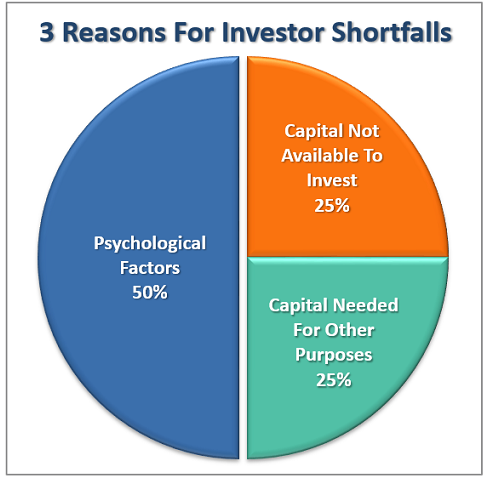Related Categories
Related Articles
Articles
30years Investment Horizon (?)
Starting point: Check out the current Valuation (e.g. Price/Earnings)
People really motivated to invest for a time frame of 30-years? Given the lack of ability, and or desire, to save in younger years most people begin to get serious about saving money around...

...35 years of age on average. Let's assume a retirement age of 65 which puts our saving and investing time frame at 30-years. If, as a millennial investor, you really want to save and invest for retirement you should understand a minimum of how the markets really work.
Markets are highly volatile over the long-term investment period. During any time horizon the biggest detractors from the achievement of financial goals come from five factors:
♦ Lack of capital to invest
♦ Psychological and behavioral factors (i.e. buy high/sell low)
♦ Variable rates of return
♦ Time horizons, and
♦ Beginning valuation levels
So, back to reality: While the inability to participate in the financial markets is certainly a major issue, the biggest reason for underperformance by investors who do participate in the financial markets over time is psychology.
Behavioral biases that lead to poor investment decision-making is the single largest contributor to underperformance over time. Dalbar defined nine of the irrational investment behavior biases specifically:
♦ Loss Aversion - The fear of loss leads to a withdrawal of capital at the worst possible time. Also known as "panic selling."
♦ Narrow Framing - Making decisions about on part of the portfolio without considering the effects on the total.
♦ Anchoring - The process of remaining focused on what happened previously and not adapting to a changing market.
♦ Mental Accounting - Separating performance of investments mentally to justify success and failure.
♦ Lack of Diversification - Believing a portfolio is diversified when in fact it is a highly correlated pool of assets.
♦ Herding - Following what everyone else is doing. Leads to "buy high/sell low."
♦ Regret - Not performing a necessary action due to the regret of a previous failure.
♦ Media Response - The media has a bias to optimism to sell products from advertisers and attract view/readership.
♦ Optimism - Overly optimistic assumptions tend to lead to rather dramatic reversions when met with reality.
Assumption: The biggest of these problems for individuals is the "herding effect" and "loss aversion."
These two behaviors tend to function together compounding the issues of investor mistakes over time. As markets are rising, individuals are lead to believe that the current price trend will continue to last for an indefinite period. The longer the rising trend last, the more ingrained the belief becomes until the last of "holdouts" finally "buys in" as the financial markets evolve into a "euphoric state."
As the markets decline, there is a slow realization that "this decline" is something more than a "buy the dip" opportunity. As losses mount, the anxiety of loss begins to mount until individuals seek to "avert further loss" by selling.
This is the basis of the "Buy High / Sell Low" syndrome that plagues investors over the long-term.
However, without understanding what drives market returns over the long term, you can't understand the impact the market has on psychology and investor behavior. In the long run, Valuations (let's just stick to the simple Price-Earnings Ratio here/following graph) may really be the only factor which eventually determines your Long-Term-Returns:

These was a nice input/bits from Lance Roberts. Lance Roberts is a Chief Portfolio Strategist/Economist for Clarity Financial. He is also the host of "The Lance Roberts Show" and Chief Editor of the "Real Investment Advice" website and author of "Real Investment Daily" blog and "Real Investment Report".
Furthermore, I have added (Ralph Gollner) some remarks to the original text !



